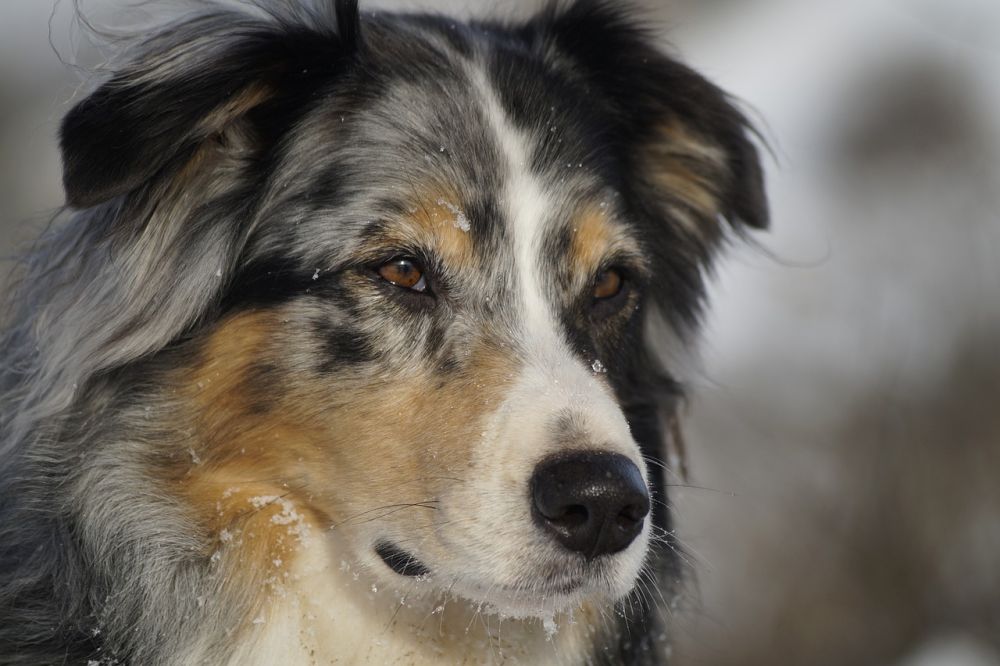
Dog Breed Guide: Australian Shepherd
They may not be as well-known as Rough Collies and Border Collies, but if you like the idea of a herding dog and you want one that is playful and a good family dog, then the Australian Shepherd may well be it.
The Australian Shepherd is a great all-rounder. They make good watchdogs, but they’re also good with other pets and children. They’re not too big and not too small, and while they do take some grooming, their coat is usually not excessively thick, which also means they can cope okay with hot and cold temperatures as we get in Canada.
History of the Australian Shepherd
The funniest part of the Australian Shepherd’s name is that they’re not Australian. In fact, they probably originated in the Basque region of Europe, and it was the Basque settlers in Australia that brought the breed with them.
They are amazing with sheep, though, so it’s no wonder that when they made their way to America from Australia, they were called Australian Shepherds. The name stuck, and when they found mainstream popularity in the 1950s as family dogs as well as on farms, it became well known.
Australian Shepherds are still very much working dogs, too, and you will still find many of them working on farms and ranches around the world.
General Physical Characteristics of the Australian Shepherd
The Aussie is a medium-sized dog with long, silky hair, a medium-length muzzle, and floppy ears. They’re usually between 18 and 23 inches tall and weigh between 40 and 65 lbs.
They have long, bushy tails (usually), but they are one of the few breeds that can have a naturally bobbed tail – which is when they are simply born with a stub of a tail.
They come in many color combinations of blue merle, black, red merle, white and tan, sometimes with tan “points”. That coat is not overly dense, but it is fairly resistant to water, which is a good trait for dogs that were bred to spend their days in damp and muddy fields!
Temperament and Character of the Australian Shepherd
Like many herding dogs, Australian Shepherds do sometimes try to “herd” their family, and that sometimes includes nips. Since you probably don’t have any sheep, that might include other dogs and children, and that’s one of the biggest issues many families find comes with living with an Aussie.
They’re smart and make great watchdogs as well as family pets, and they are very playful.
The biggest cause of temperament trouble in Australian Shepherds is a lack of exercise. These dogs need a lot of exercise, very regularly. If you skimp or skip, you will soon see behavioral problems because your dog has become bored.
They’re okay with other dogs and pets and not terrible with strangers, but as always, they do need to be properly socialized early on in order to be good canine citizens.
Lifespan of the Australian Shepherd
Australian Shepherds typically live between 12 and 15 years.
Common Health and Personality Issues in Australian Shepherds
Aussies are generally hardy dogs, but they do have their fair share of common issues, which may include:
- Eye problems include cataracts, progressive retinal atrophy, and Collie Eye Anomaly, which is a congenital defect common to collie-type breeds.
- Hip and elbow dysplasia.
- Pelger Huett syndrome.
- Nasal solar dermatitis is a skin disorder on the nose triggered by excessive sun exposure.
- Lumbar sacral syndrome is a symptom of a neurological nature triggered by compression of the nerves in the spine.
- Distichiasis, which is a malformation of the eyelashes.
- In certain strains, particularly full merle, deafness, and blindness is common.
Aussies rarely get fat, even after they are spayed or neutered, because they are so very active.
If you are looking for a tough, friendly, and smart dog and are willing to put in the time and effort to give them the exercise they need, then the Australian Shepherd is a great dog to share your life with.
